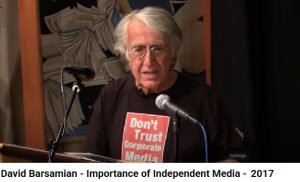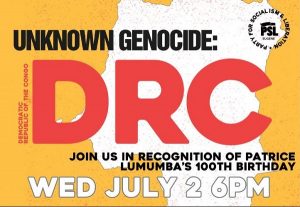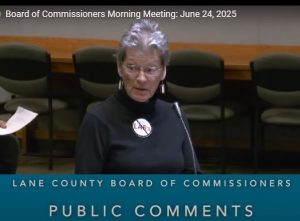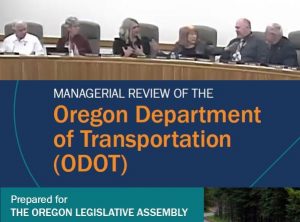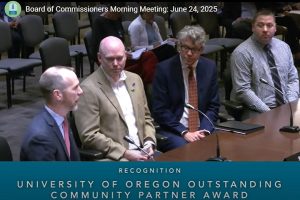Council shows interest in anti-displacement policy; Clark, Groves suggest discussing UGB
8 min read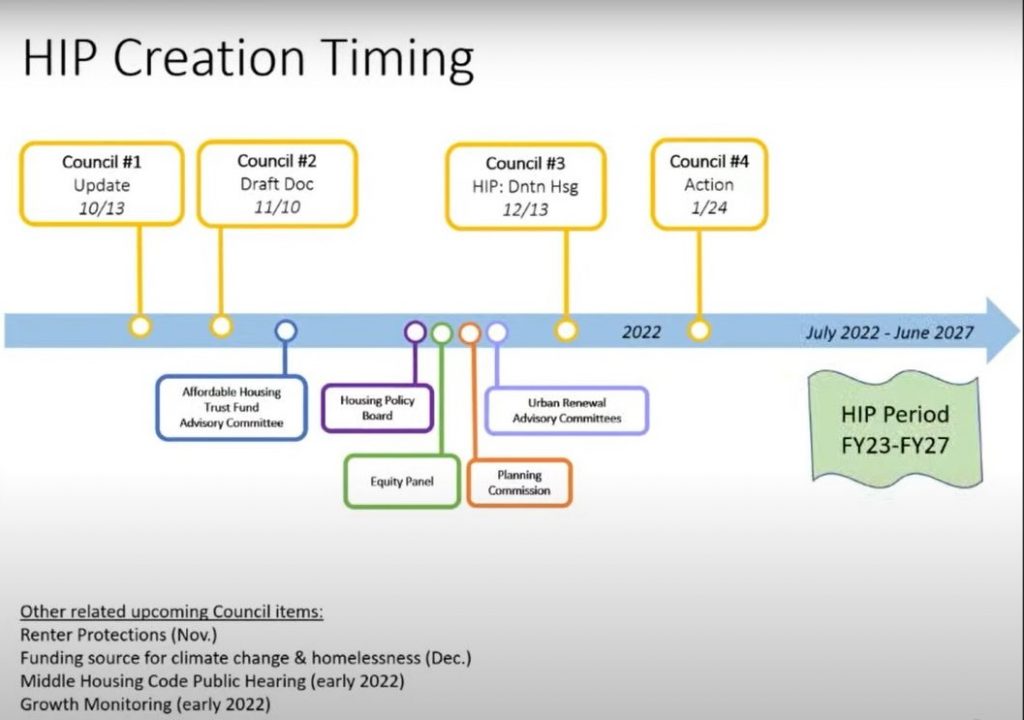
During the Housing Implementation Plan update, City staff noted anti-displacement policies, and potential help with system fees for low-income and mixed-income housing.
Amanda Nobel Flannery: I’m Amanda Nobel Flannery, to provide an update on the housing implementation pipeline. The HIP is a five-year internal work plan for housing across the full spectrum, from people experiencing homelessness to overall housing supply. Will Dowdy, Community Development Director.
[00:00:16] Will Dowdy: About a third of our households in the community are in the affordable housing range, a significant but lesser segment in the moderate income housing range, and then a slightly larger segment in the market rate housing. There’s a housing deficit, the households that are making less than $25,000. And you can see a deficit also, the households that are making a hundred thousand dollars or more. The middle of the range does not have a deficit. And perhaps you’re wondering what’s going on because it seems to be broadly recognized that households even in that $25,000 to $100,000 range are also experiencing their share of difficulty finding housing. The statistics are noticeable across the entire housing spectrum.
[00:00:57] A household that is faced with the deficit of housing find themselves either leaving the community or more likely looking at rental or purchase options that statistically don’t match their incomes, but it’s what’s available. It comes down to the fact that housing is a spectrum. Human beings have a myriad of reasons why they will need to make personal decisions. The deficits that we see can cause problems for people in those categories. But they also create spillover impacts that affect the households that are in the apparent surplus zone.
[00:01:23] Amanda Nobel Flannery: Brooke Freed, City Manager’s Office Director.
[00:01:27] Brooke Freed: Over the next two years, staff will continue to focus on increasing access to safe shelter and supportive services— 500 new spaces overall— to help homeless community members stabilize and ultimately move toward better circumstances. We anticipate continuing to collaborate with Lane County; we also imagine engaging with a broader range of partners through a regional initiative, improving access to healthcare addiction and mental health services, access to one time diversion resources and workforce development, areas where the city is not necessarily the direct provider or lead agency, but a partner in the work. This could also include federal and state advocacy, supporting these important services. With that, I’ll turn it over to Amanda.
Thank you for supporting
local civic journalism
[00:02:09] Amanda Nobel Flannery: If the city assistance is pursued, a set unit goal could be added to the income qualified housing goals. Five-year goals include permanent supportive housing units; utilizing city-owned land for redevelopment sites for affordable housing: 13th and Chambers, 33rd and Hilyard, and the Downtown Riverfront Lot 2 that’s owned by the urban renewal agency. Alissa Hansen, Planning Director, will talk about the overall housing supply goals.
[00:02:37] Alissa Hansen: Thanks, Amanda. So the first goal is to permit the construction of 6,000 housing units. Over the last 20 years, we’ve issued roughly 800 permits per year. So we’re proposing a 400 unit increase per year. It’s to address our expected population growth and to address the existing housing shortage.
[00:02:59] The second goal is about drafting an anti-displacement plan. In a tight housing market, like in Eugene, low income and vulnerable community members are most at risk for involuntary displacement from their neighborhoods. Displacement has been shown to perpetuate negative health impacts and access to health care, healthcare and other opportunities. And it can also have a negative impact on household income and how kids fare in school. Creating this action plan will help us achieve equitable housing access and benefit the health for all in our community.
[00:03:35] The third goal is about incorporating an equity lens into our work, using data-driven analysis to understand who benefits and who is burdened by particular actions and this would be paired with qualitative engagement. So reaching out and listening to historically underrepresented and at-risk communities.
[00:03:57] And the final goal is to increase the amount of housing downtown by 50%. We were really inspired by Beaverton’s Housing Action Plan as a model and inspiration for the HIP. And they have a specific goal for downtown and in terms of number of units and we were really intrigued by that. Downtown is the heart and soul of our community. It’s our economic, cultural, and social and civic center and a healthy and vibrant downtown is a key to a strong community. Housing is a critical component to create an economically vital and livable downtown. And with folks working from home, it’s become something of a monoculture. So we’re looking at really, increasing the housing down here. The downtown plan boundary goes all the way to the downtown riverfront site as well. There are roughly 2200 housing units downtown now. So this would equate to a little more than a thousand units in the next five years. And I’m going to turn it back over to Amanda.
[00:04:58] Amanda Nobel Flannery: We were able to create a forecasted number of shelter beds and housing units that could be constructed or preserved with direct city investment from existing programs over the HIP period. We did identify two potential additional investment opportunities: (1) City fee assistance for affordable housing projects, similar to the funding council has approved the past two December supplemental budgets for FY20 and FY21. The city fee assistance could also support some units each year in affordable housing projects that are not already receiving other city support. The Keystone and the Sarang are two recent projects that benefited from this kind of support. I’ll pass it to Will to talk about the second opportunity.
[00:05:45] Will Dowdy: Another option would be additional incentives, such as providing funds to pay for the permit fees and system development charges for either mixed income housing, market rate housing, or a blend of both. Another consideration is the geographic distribution of these units. The housing in the pipeline is north, northeast, or east of the downtown core, which is something that has been brought to our attention a number of times by people who are focused on downtown. Targeted investment could be a way to incentivize new units that are geographically located in the middle of downtown.
[00:06:17] Councilor Mike Clark: When we had our work session on Monday, one of the things we learned with the (2020) census, we saw 30,000 new people in the decade come in to Eugene. We planned, for the period of 2015 to 2035, 34,000 new people in that time frame. So instead of the 34,000 that we planned for, we should really be on a target for 60,000. Can you talk about that relative to growth monitoring and what you guys are seeing, with relatively double the population growth that we planned for?
[00:06:51] Alissa Hansen: I am not prepared to answer that question today, but when growth monitoring comes back and you get your first growth monitoring report, it will address population growth and it will address housing trends and all of those things that you were very interested in and that are important to our community. I’ll note you’re right. We’re using a population forecast that’s from 2009, and clearly the methodology and how that happens has changed since then.
[00:07:16] Councilor Mike Clark: And that’s awesome. That was a pillar I fought for pretty hard for us to be able to adjust as we go and for us to recognize that if we undershot, when we didn’t add land to the UGB, that maybe it would be wise for us to reconsider that decision, if what we found was that our planning was insufficient. And I don’t need further proof that it was, personally. I think we undershot dramatically.
[00:07:42] Single family homes are built most economically when they’re built 50 to 100 at a time, as opposed to one-off to fill a hole in somebody’s neighborhood where there’s an undeveloped lot. What are we seeing most of and what are you planning for?
[00:07:57] I’d like to see us do more specific work to incentivize multi-family housing being built on Sixth and Seventh, more of it, lots more of it. And I think we should create the sort of incentives we have in other places with MUPTE, and other dirty words like that, to be able to create a lot more multi-family housing on the natural transportation corridors we have built for it.
[00:08:25] Councilor Jennifer Yeh: I’d be interested to find out at some point in here, you mentioned that 20% of the downtown housing is affordable housing, it’s little over 2000 units total, I’m interested to find out, what percentage are owner-occupied. I also was very interested in the anti-displacement plan and I’d appreciate more information on that as well.
[00:08:46] Councilor Claire Syrett: I’d really like to learn more about what an anti-displacement plan might look like. If there are models in other communities, this is obviously a huge concern for folks in Eugene, particularly folks who are renters when their property, that they have no control over is perhaps sold and upscaled, and then they can’t afford it anymore.
[00:09:10] Councilor Matt Keating: I’m adding my voice to wanting to learn more about an anti-displacement plan at our earliest opportunity.
[00:09:19] Councilor Greg Evans: We have a need for people who don’t have housing period. We have a need for people who need to get adequate shelter over their heads, but that’s going to run headlong into the need that other people have on fixed retirement incomes that are not going to be able to afford the housing they’re in currently. So I just see a car wreck coming if we are not paying attention to the dynamics of how people are choosing to live differently and choosing to live smaller, not bigger.
[00:10:03] In my day job, I’m working on building an equity lens that’s going to be effective for Lane Community College. I don’t want to see us have the same kind of effect that happened in Northern and Western cities vis-a-vis the great migration of the early twentieth and mid-twentieth centuries. We could be drawing areas around places where people don’t want to live next to each other because of race or ethnicity or culture.
[00:10:35] Councilor Randy Groves: I just wanted to lend my voice to support for trying to find the most expeditious and efficient way to be adding more housing stock. One house, one ADU at a time is not going to solve our big picture issues and we’re already beyond our projections for growth in the area. And I venture to say that’s going to get worse as climate change progresses. There’s going to be climate refugees on top of everything else that we have through the natural progression. I’ll go back to also saying I would be interested and I think we’re going to have to revisit, sooner rather than later, looking at our urban growth boundary. And while I am certainly not in support of wide open unmitigated unmanaged sprawl, I think we really need to think in terms of what makes sense for developing more housing. And will also add more business sites that produce the jobs that people need.
